1. McD’s
After the U.S, Japan has the most McDonalds restaurants in the world – with 2,975 outlets. McDonalds hopes to ruin our list of 25 things about Japan by increasing the 2,500 outlets in China to 4,500 by 2022. We’re not loving it at all.
2. Nobody Home!
Japan is made up of 6,852 islands. McDonalds are welcome on 6.422 islands. Did I mention only 430 islands are inhabited?
3. Garden Fish
The deep-fried and battered dish of Tempura was introduced to Japan in the 16th century by Portugese sailors and is said to have originated from the Portugese dish of deep-fried green beans known as piexinhos da horta or in English – little fish of the garden. Tempura derives from the Latin “tempora” – a term associated with fasting- as piexinhos da horta were often eaten during Lent as a meat replacement.
4. Curry Craze
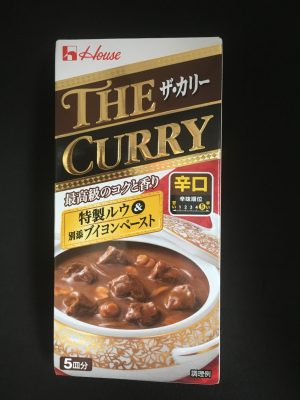
The UK & Japan have many things in common. One is a love for curry. A quick Google search will confirm the Chicken Tikka Masala to be the national dish of the UK. The British also introduced curry to Japan during the Meiji period (1868-1912) but it has since taken on a life of its own and become peculiarly Japanese. Often served with rice and eaten with a spoon Japanese curry is usually garnished with “rakkyo” or Chinese onion. Local variations include scallop, mackerel and apple curry.
5. Take a Break
The UK also exported Kit Kats to Japan –starting in 1973. The Japanese in turn consume them- almost 5 million bars a day. Why would a chocolate-covered wafer bar be such a hit in Japan you ask? The words Kit Kat sound similar to the Japanese phrase of encouragement “Kitto Katsu” (You’ll Win For Sure!) and the bar became synonymous with good-luck gifts for students knuckling down for their university entrance exams. The rest is history- the humble Kit Kat enjoyed by builders with a mug of tea is a premium brand in today’s Japan. On a visit look out for sweet potato, Japanese sake, green tea and wasabi flavours to name a few.
6. Room for More
The Greater Tokyo Area or the Tokyo Megalopolis lays claim to being the world’s largest city with a population of 37.8 million people. Yet in Tripadvisor’s 2014 World City survey Tokyo ranked first in “helpfulness of locals”, “nightlife”, “shopping” , “cleanliness of streets” & “local public transportation”. The good news is that there’s room for more as Tokyo has the lowest population density of any megacity.
7. Going Nowhere
Kawasaki City in Japan is home to the world’s smallest escalator- the Puchi-calator. “Puchi” in Japanese means teeny. This teeny escalator has 5 steps and is 83.4 cms tall.
8. Never-ending story
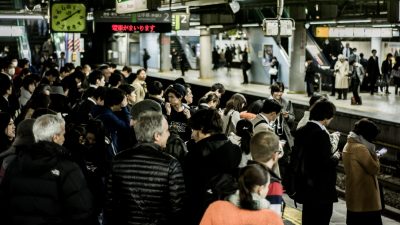
Shinjuku Station in Tokyo is the world’s busiest station with about 3.6 million passengers passing through daily. With several floors and seemingly no obvious exits (maybe it’s the same 3.6 million people daily?) there’s even a smartphone app to help tourists navigate. If you don’t like your date arrange to meet there.
9. Snooze Button
The Japanese feel safe in each other’s company but are not always stimulated in each other’s company. The phenomenon of “Inemuri” or simply passing out on public transport can be commonly observed. As a once tour guide I can attest to the fact that this habit is exported when Japanese travel abroad. I was once asked if my rather senior group of Japanese tourists who were all conked out on a bumpy ferry ride in the Atlantic had been drinking the night before as they were comatose. The sad reality was they were all in bed by 9pm the night before. I, on the other hands, was wide awake facing the sea and a monumental hangover and quite awake. If only I were Japanese.
10. Quiet Please We’re Japanese
The shutter sound on Japanese iPhone’s cannot be silenced. The purpose behind this quirky decision was to prevent pervy phone-owners from taking photos up ladies’ skirts. I really wish I made that one up. The Ninja Camera app was designed for exactly the opposite. The mind boggles.
11. Shoes off at the Door
The first railway in Japan opened in 1872 and involved a 123km journey from Tokyo to Yokohama. Dignitaries slipped of their shoes to enter the Tatami (straw-mat) of the train carriage and enjoyed a wonderful journey. On arrival in Yokohama they were surprised upon stepping out that they had left their shoes behind. Nobody’s perfect.
12. The Dark Side of Hollywood
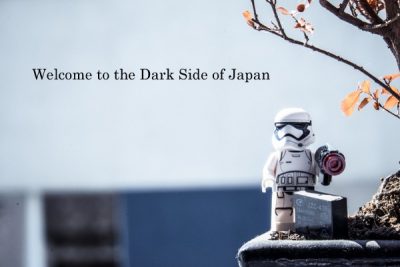
Star Wars by George Lucas was hugely influenced by Japanese samurai movies. In particular George Lucas was influenced by Akira Kurosawa’s “The Hidden Fortress” starring the fabulous actor Toshiro Mifune. Han Solo was named after Hattori Hanzo who has a gate of Tokyo’s Imperial Palace named after him- look out for Hanzo-mon or the “Gate of Hanzo”. If you can devote more of your life (time!) to this topic compare Darth Vader’s helmet to a Samurai helmet- aha! And that’s not a light sabre dude- it’s a Katana or a Japanese sword!
13. Take it Away!
The Japanese love their food. Sometimes they like it slow, sometimes fast. And they can pack it in. In Morioka City (a 3-hr train ride from Tokyo) the “Wanko Soba” eating contest is held annually. The word “wanko” is local dialect for a bowl and “soba” refers to the healthy dish of buckwheat noodles. To take part in the annual challenge a fee of 35 dollars is paid and the noodles are served with side dishes such as tuna sashimi. The goal is to eat as many bowls as possible. The record stands at 559 bowls in one sitting. Wow.
14. Gone Potty
Talking of noodles. Pot noodles, invented in Japan by Momofuku Ando, were initially a response to food shortages in Japan after the Second World War. The 3-minute meal hit the shelves in 1958 as “Chicken Ramen”. While in the UK these noodles are eaten by students and famous for their saucy advertising campaigns (think “Edwina Curry”) in Japan they have a less tarnished image. Noodle fans should pay a visit to the Cup Noodle Museum in Yokohama where you get to create your own noodles.
15. Fishy Business
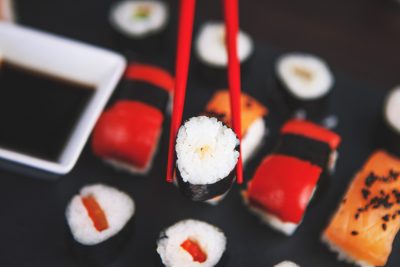
With sushi the Japanese learned not to through the baby out with the bathwater. Originally fish was fermented with salt and rice after which the rice was discarded. Then years later someone clearly questioned the practice and the rice was kept. The word sushi itself however means “vinegared rice” which is enough wiggle room to create the alternative theory that at one point the fish itself may have been thrown out. Now wouldn’t that be a good story. Alas the Japanese have that base covered as raw fish without the rice is called sashimi. I tried.
16. Silver is Gold
Japan is the world’s most rapidly aging and long-lived society. People over the age of 65 make up a quarter of Japan’s population and the numbers are on course to rise to 40% of the population. By 2025, 1 in 5 people over 65, will have dementia- around 7. 3 million people. The government has introduced long-term care and changes are being made- for example escalators are slowed down in places and the maximum age limit for work has been raised to allow more seniors into the workplace. Business opportunities abound- adult nappies have outstripped sales of children’s nappies for several years now and sales of cat & dog robots are brisk.
17. Hide Your Parents
In a lot of European countries black cats are considered unlucky. Britain, Ireland & Japan hold the opposite view that black cats are indeed lucky. If a Japanese person sees a black cat crossing their path they greet them with a cheery “Konnichiwa”. However if a Japanese person sees a hearse driving on the street (they are black in Japan too) he will hide his thumbs. Thumbs in Japan are known as “oya-yubi” or parent fingers and hiding your parents from death is considered wise.
18. Gere or Grrr?
Shibuya crossing is the most iconic view of Tokyo. However make time for a quick visit to the famous statue of Hachiko- a famous meeting point in front of Shibuya station. Probably the most famous dog in Japan this dog from the 1920s met his owner at the station after work (his owner’s work). His owner died but yet Hachiko continued to come to the station for another ten years. The real story is available on YouTube or if you prefer to watch Richard Gere in a Dog’s Tale from 2009 tell an adapted version knock yourself out.
19. Blue Murder
The Japanese are like my wife (or like me from her perspective) and confuse me with colours. A green traffic light is actually described as blue. A green apple is called an “ao-ringo” which directly translates as a blue apple and the word for a greenhorn is “ao-kusai” or someone who smells blue.Yet green tea is green! Go figure.
20. Wet Behind The Ears
Almost every smartphone in Japan is waterproof. The main reason for this is that Japanese people tend to take their phones with them when having a bath or shower. Yet Japanese people seem to hate getting wet when it comes to rain. Where I’m from we invented pubs because of rain- I like rain (I have no choice!). In a year Japanese people go through over 130 million umbrellas. But what surprises me the most is the reaction to the rain- even a little drizzle- Usain Bolt wouldn’t be as fast at getting off the street and into somewhere dry. Beats me.
21. The Royal Treatment
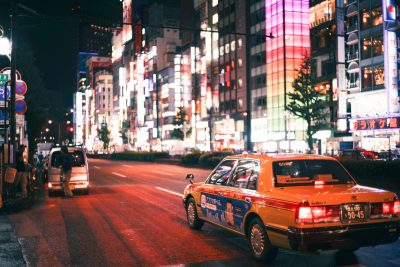
There are 260,000 taxis in Japan. I love Japanese taxis-in particular the Toyota Crown Comfort model. Not that the car itself is spectacular – it’s more a feeling close to nostalgia. Stepping into a Japanese taxi can be an experience. Lace seat covers, a box of tissues, a taxi driver in company livery complete with white gloves and cap. I usually like to chat to my drivers though some might prefer the “silent taxi” initiative launched in Kyoto by Miyako Taxi who politely announced that. “This service is currently in a trial stage, with the goal of creating an in-car atmosphere that provides the most comfortable ride for passengers through limiting the driver’s speaking.”
22. Wheelie Bins?
Vending machines are everywhere in Japan. I am still traumatized by memories of the 2002 FIFA World Cup when all the beer vending machines were removed to avoid being wheeled away by football hooligans. Japan today has 5.52 million vending machines across the country selling anything from coffee, tea & beer (yes, they’re back in more peaceful times), cigarettes and noodles- eggs and underwear. The lack of crime underpins their ubiquity and today’s vending machines offer cashless payment options. Recent developments include machines that refrigerate at night and store energy by day. Cool in every way.
23. Snap Decision
“Waribashi” are disposable chopsticks made of wood. Provided with packed lunches and even provided by restaurants millions of wooden chopsticks are used- and discarded- daily. Upwards of 25 billion pairs are said to be discarded annually -that works out at about 200 pairs for every person in Japan! The majority are imported from China who export 45 billion annually. That works out at around 25 million trees. If you want to make a difference on your visit either buy or bring re-usable plastic chopsticks. Some habits die hard.
24. Heavy Petting -a National Pastime?
Japan has more pets than children. There are reportedly 22 million pets and only 16.5 million children (kids under 15). Social commentators in Japan worry that pets are a substitute for parenthood and point to the rise in gourmet dog stores, yoga classes, dog nurseries, etc. My beef lies in the fact that the more pampered ones get to ride in baby buggies taking up the already narrow paths.
25. Last Man Standing
McDonalds, in a cruel twist of fate (see Point 2 above), might end up having a lot of outlets on an uninhabited island if things don’t change. By 2065, 38% of Japan’s population will be over 65. By 2115 Japan’s population is estimated to have fallen to 51 million people. At that rate Japan could become extinct. According to Japanese researchers the country will be down to one person in 1,750 years or the year 3766.


